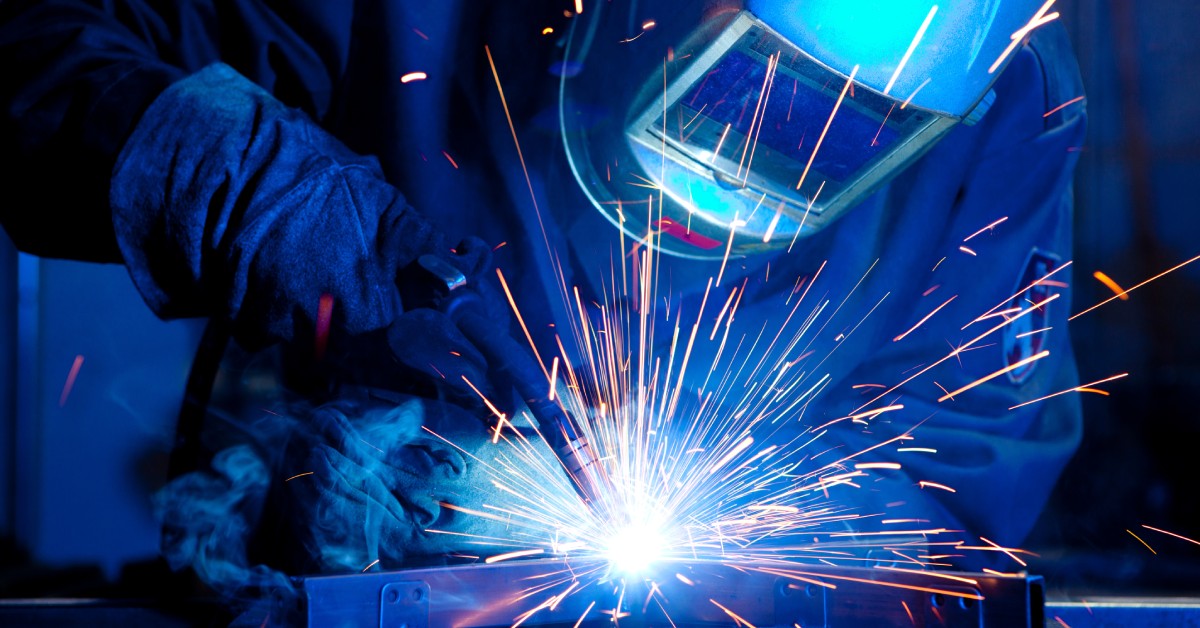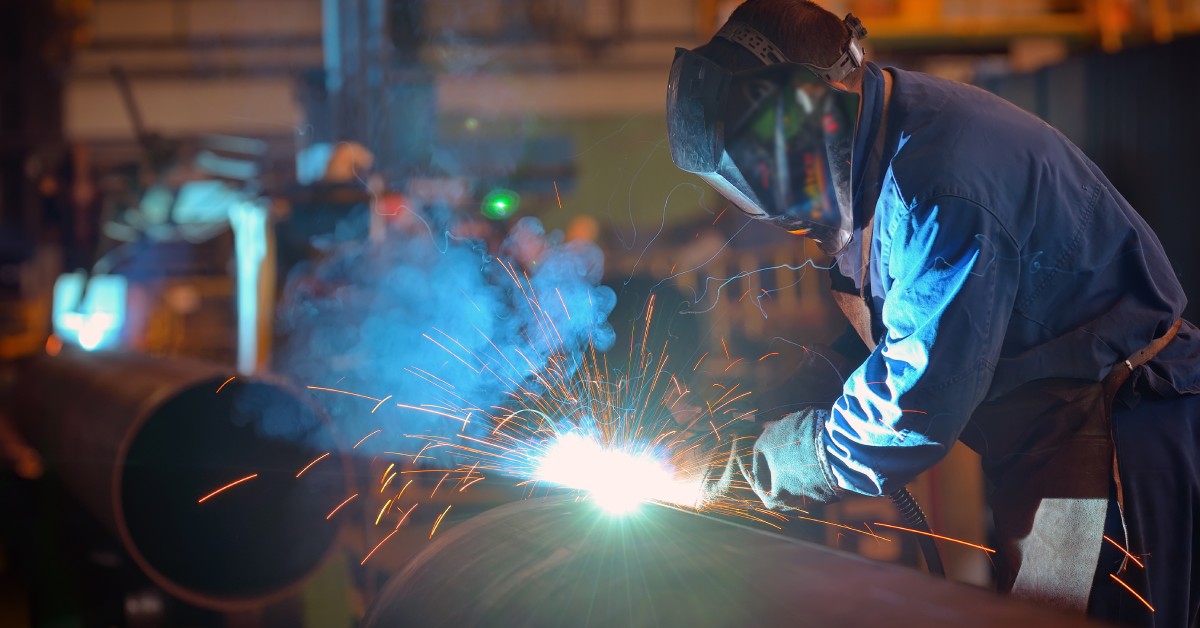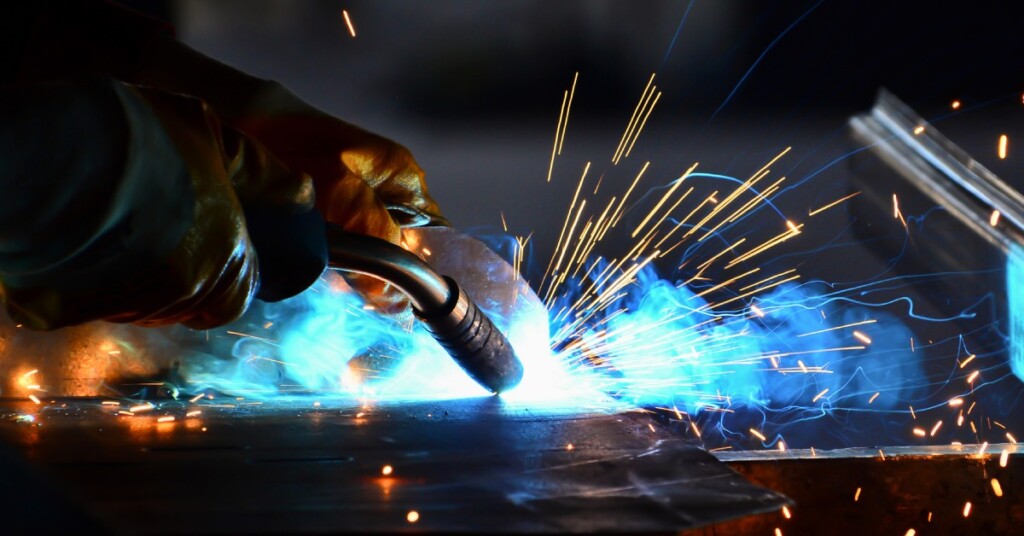Welding is the anchor that holds together the modern world. Welding’s indelible mark is present whether you’re gazing at a skyscraper or driving a car. However, the skill and practice of welding have transformed over centuries of advancements and change.
Below, we’ll take you through the evolution of welding over the centuries, from its ancient origins to its present state and future potential.
Ancient Welding Techniques
Forge Welding
Blacksmiths were the original welders in ancient civilizations such as Egypt and Mesopotamia. They practiced forge welding, which involved heating metal pieces and hammering them together until they fused. This method was crucial for creating tools, weapons, and early forms of machinery.
Bronze and Iron Ages
During the Bronze and Iron Ages, welders and blacksmiths slowly but surely refined their welding techniques. Blacksmiths developed methods to join metals for improved weaponry and tools, laying the foundation for future advancements in metallurgy.
The Welding Middle Ages
Advancements in Blacksmithing
The Middle Ages saw significant improvements in forge welding techniques. During this period, blacksmiths began to experiment with different alloys and methods to create stronger and more durable metal products. They developed advanced techniques for heating and hammering metals, which allowed them to produce high-quality tools, weapons, and armor.
Damascus Steel
One of the most notable achievements in Middle Ages metallurgy was Damascus steel. Renowned for its remarkable strength and distinctive wavy patterns, ancient metalworkers created this steel through a meticulous process of repeated heating and forging.
Once shrouded in secrecy, this technique required exceptional skill and precision from the blacksmiths. The resulting blades were not only incredibly durable and sharp but also unique in beauty, making them highly prized throughout history.

The Industrial Revolution
The Industrial Revolution saw the greatest leap forward in the evolution of welding over the centuries as modern techniques, such as gas and arc welding, emerged.
Introduction of Gas Welding
The development of oxy-fuel welding during the Industrial Revolution allowed metallurgists to use a mixture of oxygen and fuel gases to produce a flame hot enough to melt metals. This technique revolutionized the speed and quality of welding processes.
Arc Welding Emergence
In the late 19th century, arc welding made its debut. The patents and experiments of Nikolay Bernardos and Stanislaw Olszewski pioneered carbon arc welding and laid the groundwork for modern electric welding techniques.
This method uses an electric arc to melt metals, providing a more efficient and precise way to join materials. It quickly gained popularity in various industries, including shipbuilding, construction, and manufacturing.
20th Century Welding Developments
Invention of the Covered Electrode
The covered electrode was introduced in the early 20th century, dramatically improving a weld’s quality. This innovation allowed for more stable arcs and cleaner welds, making the process more efficient.
Submerged Arc Welding
Submerged arc welding emerged as a highly effective method for shipbuilding and heavy industries. This technique used a granular flux to shield the arc, resulting in deeper penetration and stronger welds.
Increased Demand Spurs Numerous Welding Advancements
Major events of the 20th century, particularly the global conflicts of World Wars I & II, precipitated an incredible demand for fabrication welding. Welding became essential for manufacturing military equipment, from ships and tanks to airplanes and weapons. This decades-long demand for metalwork and welding skills instigated many industrial and technical advancements.
Gas Metal Arc Welding (GMAW/MIG)
The invention and adoption of Gas Metal Arc Welding (GMAW) or Metal Inert Gas (MIG) was one of the most important advancements in the field of welding. This method uses a continuous wire feed and inert gas to protect the weld, allowing for faster and more precise welding.
MIG welding offered numerous advantages over previous methods. It provided higher welding speeds, better control, and the ability to weld more materials, making it a favorite in the automotive and manufacturing industries.
Tungsten Inert Gas Welding (GTAW/TIG)
Tungsten Inert Gas (TIG) welding was another significant breakthrough in the industry. This method produces high-quality, precise welds using a tungsten electrode and inert gas.
TIG welding found its niche in aerospace and high-quality fabrication, where precision and cleanliness were paramount. Its ability to weld thin materials and exotic metals made it indispensable.
Plasma Arc Welding
Robert M. Gage introduced Plasma Arc Welding (PAW) as a high-precision welding technique in 1957, revolutionizing the field with its advanced capabilities. PAW uses a constricted arc to produce a plasma jet, allowing for deep and narrow welds that are both strong and precise. This method was particularly advantageous for materials that required minimal heat distortion and high-quality finishes.
PAW was ideal for specialized manufacturing applications, including the production of medical devices, aerospace components, and electronics, where precision and control were critical. The technique’s ability to create consistent and reliable welds made it indispensable in industries that demanded the highest standards of craftsmanship and accuracy.
Late 20th Century and Modern Advances
Introduction of Robotic Welding Systems
The late 20th century saw the introduction of robotic welding systems. Automation allowed for consistent, high-quality welds with minimal human intervention.
Robotic welding offers numerous benefits, including increased productivity, reduced labor costs, and improved safety. It quickly became a staple in the automotive and manufacturing industries.
Laser Welding
Laser welding emerged as a cutting-edge technology. It uses focused laser beams to produce precise, high-speed welds. Laser welding offers unparalleled precision and efficiency, making it ideal for industries requiring intricate, high-quality welds, such as aerospace and electronics.

Current Trends and Future Directions
Developments in Welding High-Strength Alloys and Composites
Current trends in welding focus on developing techniques for high-strength alloys and composites. These materials require specialized methods to ensure strong and reliable welds.
Use of Computer Modeling and Simulation
Digital integration is revolutionizing welding processes. Computer modeling and simulation allow for precise planning and optimization of welding operations.
Impact of IoT and AI on Welding Processes
The Internet of Things (IoT) and Artificial Intelligence (AI) are significantly impacting welding processes. These technologies enable real-time monitoring and adaptive control, improving quality and efficiency.
Innovations in Recyclable and Eco-Friendly Welding Materials
Innovations in recyclable and eco-friendly welding materials are also emerging. These materials reduce environmental impact and support sustainable manufacturing practices.
Discover the Latest Welding Techniques With Sytech Inc.
We hope our trek through the evolution of welding has provided a deeper understanding of this crucial fabrication method and how it has changed over the years. Today, you can experience and discover where this evolution has brought us courtesy of Sytech Inc. Learn more about our welding services and request a quote online today.
